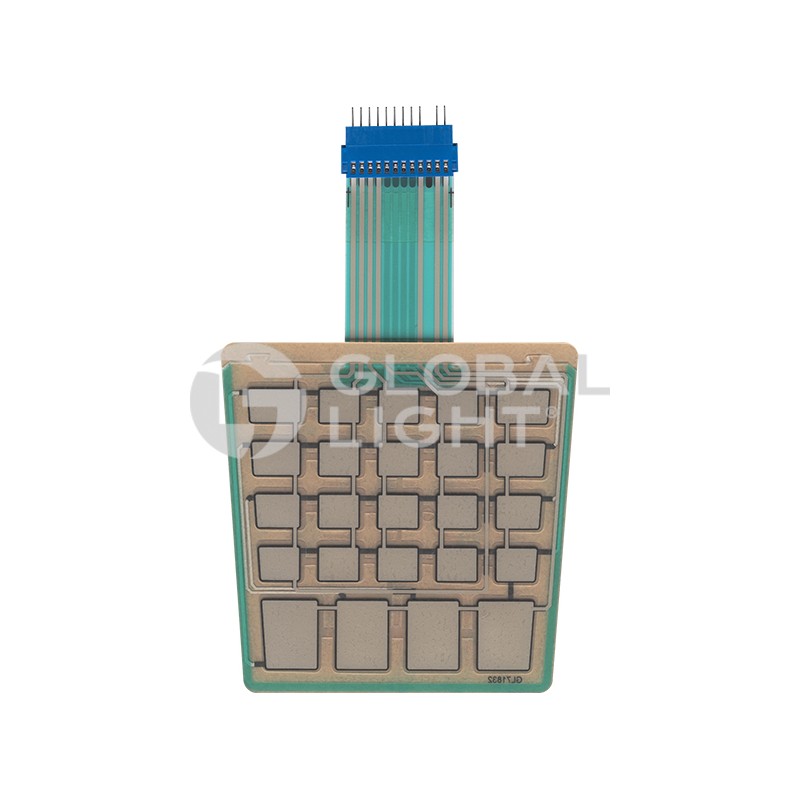How Membrane Switch Technology is Revolutionizing User Interfaces
How Membrane Switch Technology is Revolutionizing User Interfaces
Blog Article
Comprehending Membrane Switches: The Secret to Sturdy and Reputable Controls

What Are Membrane Layer Switches?
Membrane switches are a sophisticated remedy in the world of user interface innovation, integrating functionality and style seamlessly. These gadgets offer as an interface between users and electronic systems, incorporating a number of parts right into a compact style. Commonly built from adaptable, thin layers of materials, membrane layer switches are made to react to touch, making it possible for customers to connect with equipment and digital gadgets successfully.
The main aspects of a membrane layer switch include a printed circuit layer, visuals overlay, and a spacer layer that protects against unplanned activation. The visuals overlay can be personalized to show brand name identity or customer choices, improving appearances while making certain use. Membrane layer switches are commonly made use of in different applications, including clinical tools, consumer electronics, and commercial devices, owing to their resilience and resistance to environmental variables such as wetness and dust.
Among the crucial advantages of membrane layer switches is their ability to hold up against deterioration, making them perfect for high-traffic settings. Furthermore, they are lightweight and need minimal room, enabling for innovative styles in product growth. In general, membrane layer changes represent a functional and reliable choice for contemporary electronic interfaces, weding innovation with user-centric layout principles.
Just How Membrane Switches Over Work
The procedure of membrane changes hinges on a straightforward yet effective mechanism that equates customer input right into digital signals. When a user presses the switch, the leading layer flaws, permitting a conductive element in the circuit layer to make contact with a corresponding conductive pad on the bottom of the graphic overlay.
The design of membrane switches can vary, however they commonly include domes or responsive elements to provide feedback to the user, improving the general experience - membrane switch. The materials utilized in membrane switches, such as polyester or polycarbonate, add to their longevity and resistance to environmental factors, including moisture and dust. Additionally, the printed circuits are generally encapsulated, which safeguards them from wear and tear in time.
Benefits of Membrane Layer Buttons

In addition, membrane layer switches are known for their resilience. Built from durable materials, they are resistant to dirt, dampness, and physical wear, which substantially expands their lifespan compared to standard mechanical buttons. This longevity makes them particularly suitable for high-traffic settings and applications requiring durability.
An additional significant benefit is the simplicity of cleaning and upkeep. The smooth surface area of membrane layer switches reduces dust next page build-up and is usually impervious to spills, making them optimal for settings that require frequent sanitization.
Moreover, membrane layer buttons use a structured account, causing a thinner style that can be integrated into different tools without including bulk. This feature not just improves the aesthetic appeal yet likewise adds to an extra ergonomic item design.
Applications of Membrane Layer Switches
Flexible and user-friendly, membrane layer buttons find applications throughout a broad range of sectors, including clinical gadgets, customer electronics, and commercial tools. In the medical area, these switches are integral to gadgets such as diagnostic devices, client surveillance systems, and infusion pumps, where integrity and simplicity of cleansing are important. Their ability to maintain and withstand rough atmospheres capability makes them optimal for such site web applications.

In customer electronic devices, membrane layer switches are utilized in items like microwaves, washing makers, and remote controls - membrane switch. Their smooth layout enables user-friendly interface, enhancing the overall individual experience while giving sturdiness and resistance to tear and wear
Industrial devices likewise gains from membrane layer switches, particularly in control panels for machinery and automation systems. These buttons supply protection against dust and wetness, making certain consistent performance in challenging atmospheres. Their personalized attributes permit suppliers to customize them to details functional demands, boosting performance and capability.
Selecting the Right Membrane Layer Change
When selecting a membrane button, it is necessary to consider numerous variables that affect performance and suitability for specific applications. The key factors to consider consist of environmental conditions, responsive responses, toughness, and style specs.
First, evaluate the operating environment; buttons subjected to moisture, chemicals, or severe temperature levels require specific products to make sure longevity and capability. Next off, assess the requirement for responsive comments. Depending upon user communication, some applications may gain from a responsive response to validate activation, while others may prefer a non-tactile layout for aesthetic factors.
Resilience is another critical variable; membrane buttons must be developed to withstand constant use, influences, and abrasion. Guarantee the picked switch can sustain the expected lifecycle, specifically in high-usage scenarios.

Verdict
In conclusion, membrane switches over offer as important parts in the layout of resilient and trustworthy control systems throughout different markets. The try this site convenience of membrane changes enables for customized remedies that meet particular operational requirements, enhancing their value in modern technology.
Membrane switches represent an important facet of modern-day user interface design, blending functionality with resilience in various applications.Membrane switches are a sophisticated service in the realm of user interface innovation, integrating performance and style perfectly. Normally built from versatile, thin layers of materials, membrane switches are designed to react to touch, making it possible for customers to connect with equipment and digital gadgets efficiently.
The style of membrane buttons can differ, however they commonly include domes or tactile aspects to supply responses to the individual, improving the overall experience.In conclusion, membrane layer changes serve as important components in the layout of sturdy and trusted control systems across various sectors.
Report this page